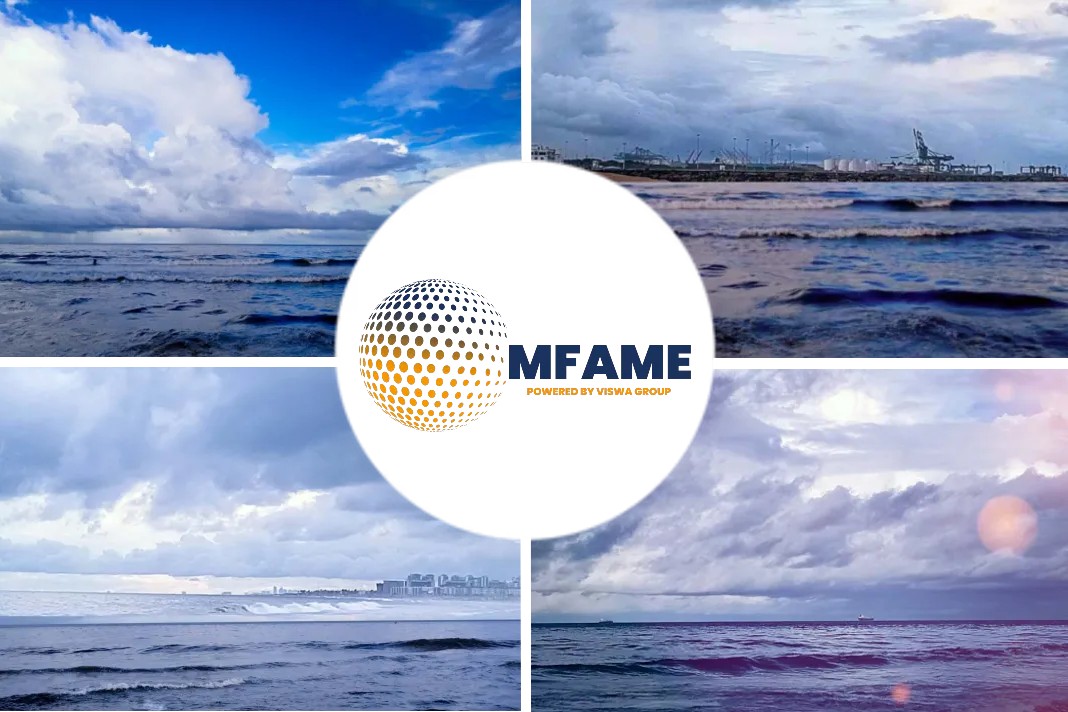
Singapore-based BW LPG goes about its business differently than many shipowners. If during a vessel’s passage it becomes clear that a berth won’t be free upon arrival at port, the ship will simply slow down so it shows up when there’s room. By not being forced to wait for days or weeks at a time, fuel is saved and emissions avoided — since these massive ships can’t just power down at anchor. Last year, the strategy equated to more than 500 metric tonnes of unburned fuel, according to Prodyut Banerjee, BW vice president and head of operations.
Virtual Arrivals
Known as “virtual arrivals,” this method of smarter shipping has been around for a while. But as the climate crisis accelerates and fossil-fuel dependent sectors like airlines and shipping struggle to shrink their carbon footprint, its popularity — as well as that of other greener strategies — is rising. International cargo and container shipping is responsible for three per cent of global greenhouse gas emissions — roughly one billion metric tons of carbon dioxide annually, equal to all of Japan’s emissions. Despite this, the industry has made few inroads towards decarbonisation, a fact regularly attributed to the difficulty of finding alternative ways to power big ships.
The International Maritime Organisation, the agency responsible for regulating shipping, has set ambitious goals, aiming to cut emissions by at least half before 2050 (using 2008 as a baseline). But with trade swelling, maritime volumes are projected to triple by then. Indeed, the IMO concedes emissions could be 30 per cent higher by 2050 if nothing is done. Traditionally, when a shipowner is chartered to transport cargo, the contract requires the vessel to arrive at its destination as quickly as possible, regardless of traffic at the port. The customer will even agree to compensate the shipowner for waiting at anchorage, something known as demurrage. Given the incentive, shipowners have traditionally hurried across oceans, burning more fuel at higher speeds only to wait upon reaching their destination.
Sail Fast And Wait
Although this practice of “sail fast, then wait” is inherently wasteful, attempts to kill it have failed, in part because of the complexities of reaching contract terms that satisfy all parties (and of course the profit incentive). A seemingly similar strategy is the “just-in-time” or JIT arrival. Rather than a contract between one shipowner and a charterer, ports coordinate their resources with all incoming vessels to ensure they optimize speed to arrive when there’s an available berth. High fuel costs have been making virtual and JIT arrivals more palatable to the shipping industry. But what’s really driving their appeal is a regulation the IMO has been enforcing since January, the Carbon Intensity Indicator, which requires shipowners to improve their vessels’ carbon emissions. “These operational measures are relatively straightforward and can be implemented today without huge investments into technology and infrastructure,” said Minglee Hoe, a technical analyst with the IMO.
A 2022 report concluded container ships can reduce fuel consumption and CO2 emissions by 14 per cent per voyage if they optimize speed this way, and by four per cent if they optimize over the past 12 hours. Studies suggest that removing wait times at anchorage can cut global shipping emissions by around 20 per cent. But it’s doubtful virtual and JIT arrivals can be implemented at scale. With virtual arrivals, the problem is the number of parties involved with each vessel, where everyone has to agree to a contract that allows the ship to slow down, said BW’s Banerjee. Last year, the company implemented a virtual arrival on only seven voyages out of hundreds completed.
Saving Potential
“There is a big savings potential,” said René Taudal Poulsen, a professor of international shipping and trade at the Copenhagen Business School in Denmark. “But it’s much more complex than the airline industry, where you have a control tower that basically orchestrates the whole operation.” Since 2014, the International Taskforce Port Call Optimisation, a coalition of shipping companies, has been working to standardize the exchange of nautical, administrative and operational data between ships and shore. In September, the Maritime and Port Authority of Singapore signed a memorandum with Voyager Worldwide, a leading provider of maritime navigation and shipping management technologies, to design its own system. Some industry observers aren’t optimistic any of this will make a dent in emissions.
“Just in time berthing would be fantastic,” said maritime lawyer Zografakis. “But it hasn’t happened for decades, and it will not happen at scale for more decades.” Some install energy-saving devices such as hull coatings that reduce drag. Others are building rotor sails — tall cylinders that harness the power of the wind to propel ships. Finland-based Norsepower claims its rotor sails can reduce ship emissions by as much as 20 per cent over their lifetime. While all of these ideas could bring emission reductions, the inescapable truth — as is the case with air travel — is that nothing big will happen until fossil fuels are replaced as a means of propulsion.
Did you subscribe to our newsletter?
It’s free! Click here to subscribe!
Source: Thenationalnews















